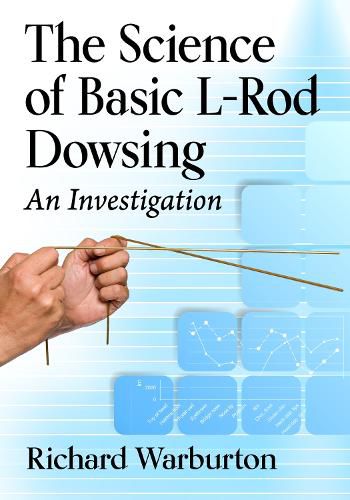Readings Newsletter
Become a Readings Member to make your shopping experience even easier.
Sign in or sign up for free!
You’re not far away from qualifying for FREE standard shipping within Australia
You’ve qualified for FREE standard shipping within Australia
The cart is loading…






Dowsing has been a known practice for approximately 500 years, with some evidence suggesting it may even have been used for five millennia. Historically, dowsers used a forked, Y-shaped stick, following the movement toward the presence of water, minerals, or other objects located beneath the ground. Today, the most common tool used is a wire bent into the shape of an "L," leading to the practice known as L-rod dowsing. Only a few of dowsing's many forms appear to have a clear physical basis, such that some physical phenomena in the environment causes a physiological response in the body. Despite the many studies performed in the past, none have resulted in a comprehensive, testable explanation for how dowsing works.
This book reviews and critiques some of the common explanations for L-rod field dowsing, describes an investigation into various aspects of L-rod dowsing, and proposes a mechanism which explains the physical observations. The first part introduces dowsing and critically reviews the major physical theories presented to date to explain it. The second half of the book builds on the prior scientific studies that looked to explain the process behind dowsing, develops the evidence, and presents a theory based on well-known scientific principles for the physical component of dowsing.
$9.00 standard shipping within Australia
FREE standard shipping within Australia for orders over $100.00
Express & International shipping calculated at checkout
Dowsing has been a known practice for approximately 500 years, with some evidence suggesting it may even have been used for five millennia. Historically, dowsers used a forked, Y-shaped stick, following the movement toward the presence of water, minerals, or other objects located beneath the ground. Today, the most common tool used is a wire bent into the shape of an "L," leading to the practice known as L-rod dowsing. Only a few of dowsing's many forms appear to have a clear physical basis, such that some physical phenomena in the environment causes a physiological response in the body. Despite the many studies performed in the past, none have resulted in a comprehensive, testable explanation for how dowsing works.
This book reviews and critiques some of the common explanations for L-rod field dowsing, describes an investigation into various aspects of L-rod dowsing, and proposes a mechanism which explains the physical observations. The first part introduces dowsing and critically reviews the major physical theories presented to date to explain it. The second half of the book builds on the prior scientific studies that looked to explain the process behind dowsing, develops the evidence, and presents a theory based on well-known scientific principles for the physical component of dowsing.